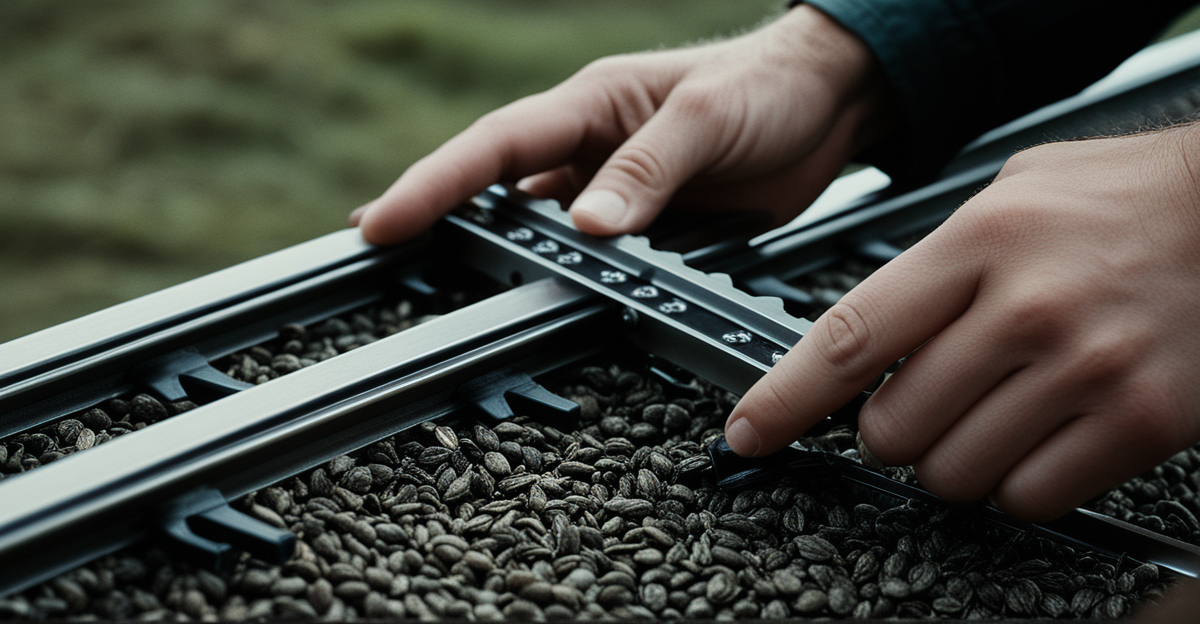Selecting the right fixing method using clips or rails can streamline installation while ensuring long-lasting stability. Understanding how each system works, their compatibility with materials, and common pitfalls helps both DIYers and professionals achieve precise results. This guide breaks down practical steps, highlights advantages, and offers tips to avoid errors, making complex attachment techniques accessible and reliable for your next project.
Essential Techniques and Applications for Clip and Rail Fixing Systems
You can view additional technical details on this page: https://www.fiberdeck.com/cladding/weo-brise-soleil/. Modern construction, cladding, and industrial applications increasingly rely on clip fixing systems and rail mounting techniques for efficiency and adaptability. These systems are engineered to simplify the process of securely attaching panels, facades, or even underfloor heating pipes, offering both modular clip systems and robust wall mounting rails tailored for specific needs.
Have you seen this : Top Energy-Saving Cooking Techniques for Your UK Kitchen: Maximize Efficiency and Minimize Bills
The versatility of these solutions is evident across many applications. Installers benefit from quick and stable assembly when using installation with fixing rails for flooring, façade panels, and even specialized features like brise-soleil sunshades. For projects such as solar thermal systems and underfloor heating, rapid-rail clip methods enhance both speed and consistency, ensuring even pipe layout or panel positioning.
Key installation objectives stability, fast assembly, durability, and adaptability remain paramount. Proper spacing between rails and thoughtful selection of secure fastening methods help handle various load demands. The right combination of clip and rail not only streamlines project timelines but also supports long-term performance in demanding environments.
Also to read : Top Drought-Resilient Plants Perfect for Your UK Garden
Step-by-Step Installation Guide for Clip & Rail Fixing
For reliable installation using clips, always start by preparing the substrate ensure surfaces are stable, clean, and compatible with your chosen clip fixing systems. Place insulation, like polyurethane sheets, over structural supports to protect both the assembly with fixing rails and the final system. This foundational step supports even load distribution, crucial for secure fastening methods.
Aligning and Placing Rails:
Accurate rail mounting techniques rely on careful alignment. Use precision rail alignment tools to lay out rails with consistent spacing typically one meter apart and parallel to key surfaces. Assembly with fixing rails benefits from these tools, reducing error and increasing efficiency. Wall mounting rails and modular clip systems allow flexibility for both horizontal and vertical orientations, suiting pipes, panels, or façade elements.
Securing with Fasteners:
Snap-on fixing clips or adjustable clip mounting brackets accommodate varied rail support structures. Quick clip installation streamlines the process simply apply pressure or use dedicated fixing clip installation tools to lock components firmly in place. Modular clip systems accept both metal clip fasteners and plastic rail attachments, depending on durability and environmental needs.
For additional safety, consult fixing clip installation tips, such as confirming compatibility of clip sizes, reviewing load-bearing clip systems, and inspecting corrosion-resistant fixing clips to maximize the longevity and reliability of the installation.
Comparative Advantages, Disadvantages, and Real-World Examples
Clip fixing systems present clear strengths for diverse settings. Their modular design enables rapid and secure fastening methods, which translates to swift clip installation and reliable load-bearing capabilities. Regular use in crane rail fixing, underfloor heating, and architectural sunshade setups highlights the clip fixing advantages notably, reduced installation time and consistent rail alignment. Adjustable clip mounting ensures precise placement under varying site conditions.
Durability stands out as a principal benefit. Clip and rail durability depend on the materials used. Corrosion-resistant fixing clips, particularly in marine or heavy-industry environments, extend the life of the fixing system and minimize frequent replacements. Choosing the right fixing clip materials, such as stainless steel, helps withstand harsh weather and vibration.
However, there are important fixing clip disadvantages. Load limits for some metal clip fasteners do not always match those of traditional screws or welded rail mounting techniques. Regular fixing system maintenance may be needed to avoid loss of tension or unexpected movement, especially on heavily loaded or vibrating structures. Snap-on fixing clips, while quick to deploy, sometimes lack the robust grip needed for dynamic loads found in gantry or crane rail installations.
Clip and rail durability, secure fastening methods, and clip fixing advantages collectively streamline various projects but should be balanced with an understanding of long-term performance and fixing clip disadvantages.
Best Practices, Safety, and Professional Tips
Fixing clip installation tips should always prioritize safety, especially when working with crane rail and gantry systems. Use proper personal protective equipment when handling metal clip fasteners, and check that all rail support structures are clear of obstructions before assembly with fixing rails begins. Consistent spacing, as outlined in clip rail spacing guidelines, is critical overly wide or inconsistent placement can compromise secure fastening methods.
Rail installation safety hinges on assessing rail load capacity and supporting structures before mounting. Always verify that adjustable clip mounting systems match the load-bearing requirements of your project. For slide rail fixtures and panel support clips, confirm the compatibility between the fixing clip materials and the substrate, whether for wall mounting rails, ceiling installations, or clip mounting on drywall. Quick clip installation should never come at the expense of proper alignment and torque specifications.
Fixing methods for panels demand attention to modular clip systems and the use of corrosion-resistant fixing clips, especially for rail fixing for exterior use. When selecting fixing clip sizes and fixing hardware selection, always account for environmental conditions and expected loads. Avoid using mismatched rail bracket types or plastic rail attachments in high-demand situations unless proven by clip strength testing. Following fixing system design principles ensures reliable and durable outcomes, minimizing future fixing system maintenance.











